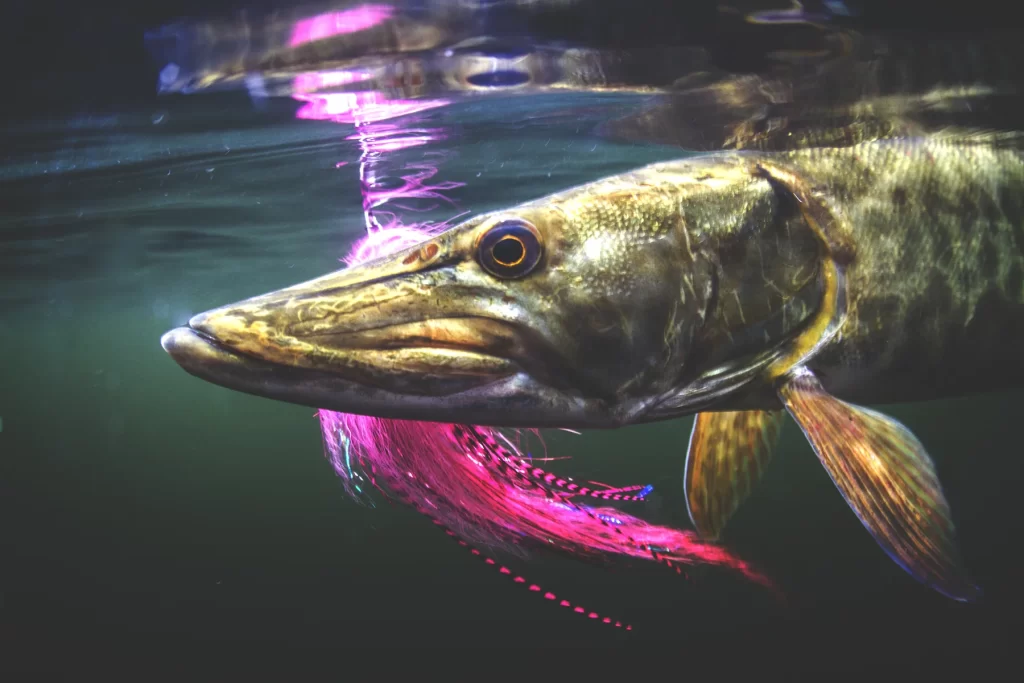As seen on the CHEEKY Fishing Blitz Blog
Musky are notoriously called the fish of 10,000 casts due to their difficulty to locate and catch. They are the largest predators amongst the Esox genus and can be found from Tennessee and Virginia to Washington State, but are most prevalent in the northern and northeastern portion of the US. If you’re looking to target musky on the fly they might be the fish of a million casts. Over the years fly fishing for musky has gained a ton of popularity, as these toothy predators have slowly garnered the imagination and attention of thrill seekers looking to throw giant flies in hopes of hooking the fish of a lifetime. You also don’t have to travel half way around the globe to catch one.


Tackle
It’s important to pick the right setup to get the job done. Musky flies are nothing to trifle with. They’re usually large and awkward to cast. The ideal rod is a 10 foot fast action 12 weight with an elongated butt section to easily turn over flies and perform the proper figure 8. When it comes to reels, a Cheeky Limitless 425 or 475 Fly Reel will balance out most rods perfectly. As for fly lines, a 350 to 450 grain sink line will provide the perfect presentation since musky prefer deep backwater eddies and drop offs. That said, during pre or post spawn fish can be targeted with floating or intermediate lines quite effectively since they’ll be up shallow. As for rigging, the key is to keep the leader short and sweet since it will allow the fly to turn over with ease. Nonetheless, the ideal set up is either a 4 foot section of 100lb fluorocarbon crimped to a quick change fly clip or a 2 foot section of 80lb fluorocarbon tied via blood knot to 60 lb wire and a quick change fly clip.


Flies
So many options, so many colors, it’s easy to get overwhelmed by the vast amount of musky flies out on the market these days. When it comes time to pick the right fly, it’s important to understand the bait you’ll be mimicking. Musky love eating a variety of suckers, carp and other large baits. Thus flies that glide, ungulate, walk and move water are a must! While everyone has their secret pattern, some proven patterns are the double buford, gamechanger, and the musky killer. In terms of color, you should always carry a spectrum of natural and bright colors such as tan, black, pink, chartreuse, and white.


Fabled Figure 8
Musky love to track the fly right up to the boat. Whether they show themselves or not they could be following from a distance on any cast so it’s important to fish the fly directly to the boat. Once the leader hits the rod tip, it’s time to practice the proper figure 8. Begin by grabbing the butt section and leading rod grip with two hands, next dip the rod in vertically 4-5 feet deep, move your fly rod in an 8 motion for 3 turns, as you hit the turns of the 8 shape speed the fly up slightly. This will fire up any fish that is hot on the fly or following deep from underneath. If there’s no follow after 3 completed figure 8’s it’s time to start the next cast. However, if you’re fortunate enough to elicit a follow, keep practicing the figure 8 until the fish eats or loses attention. In the event that the fish crushes the fly with cruel intent, always set the hook toward the tail, this will ensure that the fish stays buttoned.


Tips for the Hunt
Now that we’ve gone over tackle, flies, and retrieve, it’s time to focus on locating that mythical fish. First, it’s crucial to focus on areas of low current. Musky are efficient hunters that want to use the least amount of energy as possible when hunting prey. Areas of low current are typically backwater eddies and deep drop offs. Another factor to consider is structure. Musky aren’t mobile hunters that chase bait up and down the river all day. Instead, they wait opportunistically around log jams, gravel bars, drop offs, and boulder fields. When fishing these areas, you have to be patient and thorough with each cast. Leave no stone unturned and ensure that you give each spot time as a musky can come out of nowhere and smoke your fly! The final factor to consider is the major and minor moon phases.The major period is when the moon is halfway between the rise and set period while the minors are periods in which the moon rises and sets. While some fishermen think these phases have no correlation to fish activity, most musky guru’s are firm believers that these daily phases drive fish activity. I don’t know about you but I’m a firm believer in putting in the time. If you come prepared with the right attitude, gear, and understanding of what to look for, you’ll be on your way to landing your first musky.
Treat them right
If you work hard and find that fish of a lifetime, remember to treat them right. Use a rubberized net of sling to land the fish and try to keep it at the waterline if at all possible. Avoid fishing the heat of the summer and release them quickly. For more handling information Keep Fish Wet is a great resource.

